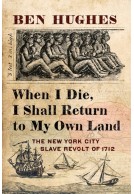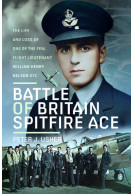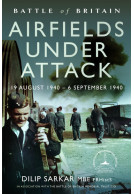Flying Light Helicopters with the Royal Marines (Hardback)
Collective Tales From Marine Air 489
Imprint: Air World
Pages: 304
Illustrations: 42 black and white illustrations & 3 black and white maps
ISBN: 9781399002509
Published: 1st September 2021
(click here for international delivery rates)
Order within the next 3 hours, 49 minutes to get your order processed the next working day!
Need a currency converter? Check XE.com for live rates
Little has been written about Royal Marines rotary aviation, the small and select unit which operated light helicopters between 1965 and 1995. Officer and senior non-commissioned officer pilots had the unique privilege of being both Commandos and aviators, flying from warships and operating ashore in support of the Royal Marines. Initially called Unit Air Troops, which then coalesced into 3 Commando Brigade Air Squadron Royal Marines, they operated in hostile environments, including the Arctic, mountains, jungles and deserts.
Robert Wilsey served in the Royal Marines from 1969 to 2000. Having qualified as a pilot he served through much of the existence of the Royal Marines Air Squadron, from a junior pilot right up to becoming its commanding officer.
In this unique book, the author tells of the evolution and technological advances of Royal Marines aviation, flying the Westland Sioux, Scout, Gazelle, and, ultimately, Lynx helicopters. He describes the rigorous training undertaken, including flying from ships at sea, and of operating globally from Malta, Northern Ireland, the jungles of Brunei, the Pyrenees, Arctic Norway and, in 1991, Northern Iraq, protecting the Kurds during Operation Haven.
Colonel Wilsey also describes the challenges of the British military’s basic and advanced rotary flying training, from both a student’s and flying instructor’s perspectives. He explains the pressures of leading a flying display team and relates stories of numerous incidents and accidents, many amusing, several chaotic and some tragic.
This is a vivid first-hand account of military rotary wing flying which will appeal to aircrew both civil and military, aviation enthusiasts and military historians.
"It is a fascinating read. The author has produced a real masterpiece with this absorbing account of his life in this most demanding arena of military support aviation."
Fleet Air Arm Officers’ Association newsletter - May 2023 edition
Engagingly written, with self-deprecating humour, it should appeal to everyone.
'The Pennant’, the Journal of the Forces Pension Society - Autumn 2022
Highly recommended.
I have been looking forward to reading and reviewing this book for quite some time. Army Aviation is considered by many in aviation circles as a niche activity that attracts a specific type of person... flying in the Royal Marines is definitely a niche within that niche! With that long-confirmed belief firmly in place I tackled this detailed account of thirty years of helicopter flying with the Royal Marines.
Mike Peters - Guild of Battlefield Guides, RHQ Royal Anglian Regt
This is a fascinating story that tracks the author's varied flying career from his early experiences in 1965 to retirement from flying duties in 1995. This was a really exciting time in the development of military helicopters. The types that appear in Robert Wilsey's very full log book(s) range from the Westland Sioux, to the iconic Scout, the Gazelle and finally the Lynx. The feel and experience of flying all of these very different types is described in the forensic technical detail that you might expect from an experienced QHI. The role and deployment of the Royal Marine Air Squadrons & Flights over the years ensuring that those descriptions include informed narratives of the challenges of flying in almost every climate and type of terrain on the planet.
This really is a book about flying, whether that be the pressures of flying on military operations, or leading the Army Air Corps Helicopter Display team in its all-Lynx equipped heyday. There is a personal narrative underpinning and complimenting every chapter, but thats clearly not what the book is about. So, if you are an aviation nut, consumed with a hunger for detail and expert insight into the challenges of flying military helicopters, then you will love this absorbing book.
Robert Wilsey was clearly a very gifted and well respected pilot as is manifested by the awards, appointments and recommendations bestowed on him by the other services. He was awarded the Queen's Commendation for Valuable Service in the Air for N Iraq and the United States Legion of Merit. He writes very modestly and certainly does not brag, although he would have considerable justification in so doing. He does not hide his mistakes, but always learns from them, and describes some very close calls including a near-fatal crash.
Col Brian Carter
As Featured in
Model Aircraft Monthly, October/November 2021
You know that you are in for a treat when you are drawn into the narrative within the first few paragraphs; as is the case here, with initial references to Vikings, Ambassadors, Meteors, Austers, Chipmunks and T.38 Grasshoppers! In the words of Roger Bacon (Straight and Level, Flight Magazine diarist in days of yore) Colonel Wilsey is a ‘total aviation person.’
Guy Warner, Ulster Aviation Society
That said, I have read many enthusiastically written aircrew memoirs and by no means all of them have been up to scratch. Quite often an author may be a highly competent aviator but, unfortunately, also a very poor writer, who refuses to avail himself of the necessary services of an editor or proof-readers. This is certainty not the case here, happily, as this author tells his absorbing tale factually, anecdotally and technically with considerable aplomb.
A key part of my pleasure in reading this book has been the care and trouble taken over the endnotes, these really enhance and illuminate the main text. So while reading, I would suggest, keep a marker in this section for quick reference.
We follow the author through his training at Middle Wallop, flying Chipmunks, Bell 47s and Sioux, where the developing theme was, ‘How to use the aircraft and not just fly it.’ The attitude of the instructors was robust, summarized pithily as, ‘stop talking and get on with it.’ This produced, ‘sound, self-reliant pilots - if they survived training.’ Conversion to the brand new Gazelle followed immediately, which was a quantum leap from the Sioux, as, amongst other qualities, it cruised twice as fast. His first posting to 3 CBAS in 1975 included deck landings on the Commando Carrier, HMS Bulwark and smaller platforms, which, counterintuitively, were less challenging as there were likely to be fewer aircraft on deck.
Over the course of his long flying career the author flew Gazelles, Sioux and Lynx in such diverse locations as Malta, Brunei, Northern Ireland, Germany, France, Norway, Canada, Belize and Northern Iraq, as well as having considerable experience as a QHI and as an air display pilot with the Sparrowhawks and the Silver Eagles. A surprising fact is that this latter Lynx-based team sometimes added a Beaver to the mix. He also achieved command of 3 CBAS in 1989, culminating in 1991 with the challenges of Operation HAVEN in Northern Iraq.
Reading this well-crafted account felt much the same to me as if I were sitting in the Mess Bar or Anteroom listening to this highly experienced airman’s ‘dits’, told with verve, along with detailed explanations of flying techniques, tasks and terrain in each of the theatres covered.
As may have been gathered, I really enjoyed reading this book - highly recommended!
A clear insight into the era of light helicopter support to the Royal Marines
Amazon UK Review
The author's experience follows the evolution from embedded unit flights through to a 3 Commando Brigade capability. This description from a pilot / aviation commander's experience is both an excellent historical record and a fitting tribute to all who were involved. Highly recommended reading for anyone with an interest in military aviation or the campaigns where the author served.
"The best step by step description of the Army Pilots Course I have ever read."
Amazon UK Review
5 Stars
"For flying adepts this book is undoubtedly a recommendation."
Aviation Book Reviews.com
Read the review here
A marvellous insight into life a Royal Marines helicopter pilot.
Amazon UK Review
This book recounts the progress of the author through his long Royal Marines career from commando training to fly helicopters and onto exercises operational deployments. Through his experiences we learn not just about complexities of flying but the also the history of the the 3rd Brigade Air Squadron. You read about the struggles and pitfalls of early helicopter operations, struggling against poor engine performance and the quirks of the various helicopters handling and capabilities. Practising to land a helicopter with the engine turned off is not for the faint hearted or foolhardy!
The book is very well written with lots of details and illuminating chapters as he recounts his progression from student to display pilot and qualified helicopter instructor. Along the way you traverse the globe on deployments both in peacetime and conflict, from arctic warfare training, the humid jungles of Brunei and the hot and dusty mountains of northern Iraq, each with their own hazards.
Flying can be a dangerous occupation and whilst the author luckily walked away from his prangs we also learn of his colleagues and friends who were not so fortunate serving our country. I highly recommend this book for its detail and wealth of colourful accounts.
5 Stars.
A Fitting Tribute to Royal Marines Rotary Wing Aviation.
Amazon UK Review
Over a long and distinguished flying career the Author kept detailed records of every aspect of operating the military helicopters he flew. In this book he shares a very readable and full account of his time in Royal Marines' aviation - from flying training, to the realities of operations in some of the harshest and most demanding of flying conditions (arctic, maritime, mountain and jungle), and finally what it was like to be in command during Operation Haven in Iraq.
For anyone interested in military light helicopter operations generally this is a very good and informative read, but it also forms a fitting tribute to those that served at that time, especially in 3 Commando Brigade Air Squadron.
5 Stars
Featured in
Aeroplane - January 2022
This captivating book by Colonel Robert Wilsey, Royal Marines, is an excellent account of the who, when, how, what, why and where were the RM helicopters in the 20th century last few decades. I loved the detailed account of his carrer as a Royal Marines soldier and pilot. I learned a lot from the numerous events he recalled, mostly good and some scary ones as well. If you ever changed an helicopter transmission in the field, this book is for you. I particularly enjoyed reading and travelling around the world with him via my iPad Google map app. Thank you for this superb book!
Amazon Review
5 Stars
As in his other books and articles Robert writes with a light touch and what could have been a boring, stodgy book is in fact very readable and even exciting. Once started the reader is compelled to continue to the end. This book will particularly appeal to other aviators and those with an interest in the operation of helicopters in the military.
RM Historical Society magazine ‘The Sheet Anchor’
The author served in the Royal Marines from 1969 to 2000, qualifying as a pilot and eventually becoming the Commanding Officer of its only Air Squadron. He thus flew globally in support of the Marines Commando operations, and this book is a series of collective tales, covering his initial training, operating from ships at sea, in the jungles of Borneo and the Arctic etc. All is told with dashes of humour and in an immersely readable style that is difficult to put down. The result - Highly Recommended…
Helicopter International - Volume 43, Number 01, 12th January 2022
Over a long and distinguished flying career the Author kept detailed records of every aspect of operating the military helicopters he flew. In this book he shares a very readable and full account of his time in Royal Marines' aviation - from flying training, to the realities of operations in some of the harshest and most demanding of flying conditions (arctic, maritime, mountain and jungle), and finally what it was like to be in command during Operation Haven in Iraq.
Alastair Rogers
For anyone interested in military light helicopter operations generally this is a very good and informative read, but it also forms a fitting tribute to those that served at that time, especially in 3 Commando Brigade Air Squadron.
"This is the most definitive and well-written account I have ever read of military helicopter flying. Superb."
Amazon Review
5 Stars.
As featured in
Aeroplane Monthly
Well written book, of a life well lived. If you ever wanted to know more about a career in the Royal Marines flying helicopters, this is a great read.
Amazon Review
5 Stars
Featured by
Royal Aeronautical Society
Throughout the book, the author provides a fascinating journey through 31 years as a Royal Marine aviator which will appeal to all who are interested in aviation and I can say, without hesitation, this is one of the best books I have read in recent years.
Richard K Parkhurst, IPMS Portsmouth
Very Highly recommended.
About Col Robert Wilsey
ROBERT WILSEY served for 31 years as an officer in the Royal Marines as both an infantry commander and aviator. He was awarded the Queen’s Commendation for Valuable Service in the Air for N Iraq and the United States Legion of Merit. After retiring from the Royal Marines, Colonel Wilsey worked for nine years for a US aerospace company, following which he ran his own avionics consultancy business. Recently retired, he is a Fellow of the Royal Aeronautical Society. Robert has written over 50 articles on aviation, military history and early breech-loading military rifles and is the author of two books on antique firearms. He and his wife live on the Welsh borders and have two grown-up children.
The First Helicopter Boys The Early Days of Helicopter Operations - The Malayan Emergency, 1947–1960 (Hardback)
The Indonesian Confrontation that raged from 1963 to 1966 stemmed from Indonesia’s opposition to the creation of Malaysia. Fighting in the challenging jungle terrain of Borneo and in the countryside straddling the Malaysia/Indonesia border, where there were few roads, posed significant logistical challenges to both sides. That the conflict was ultimately a victory for the Commonwealth forces was in due in no small part to the fact that they enjoyed the advantage of vastly superior helicopter resources and better trained crews – many of which were provided by British units. During the Confrontation,…
By David TaylorClick here to buy both titles for £50.00
















